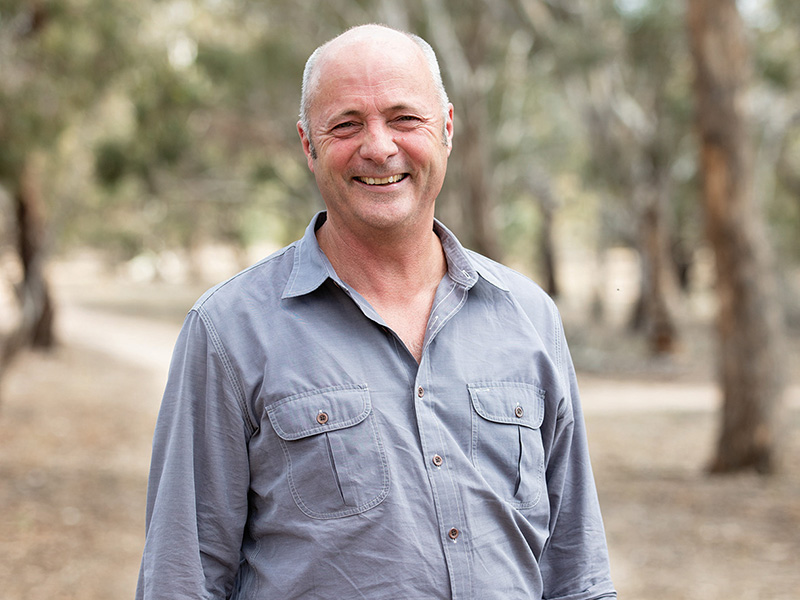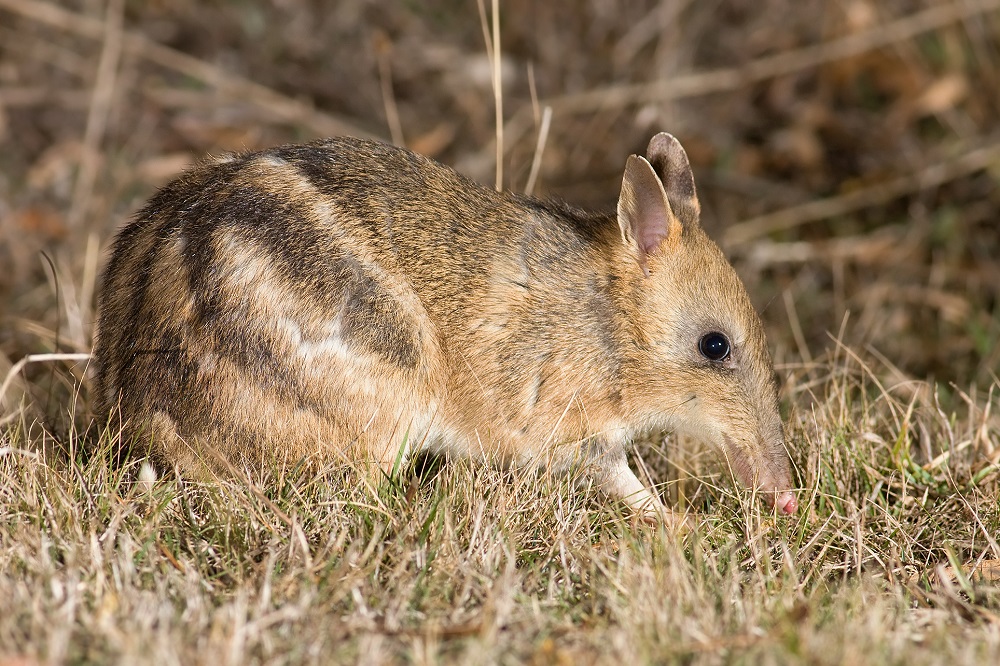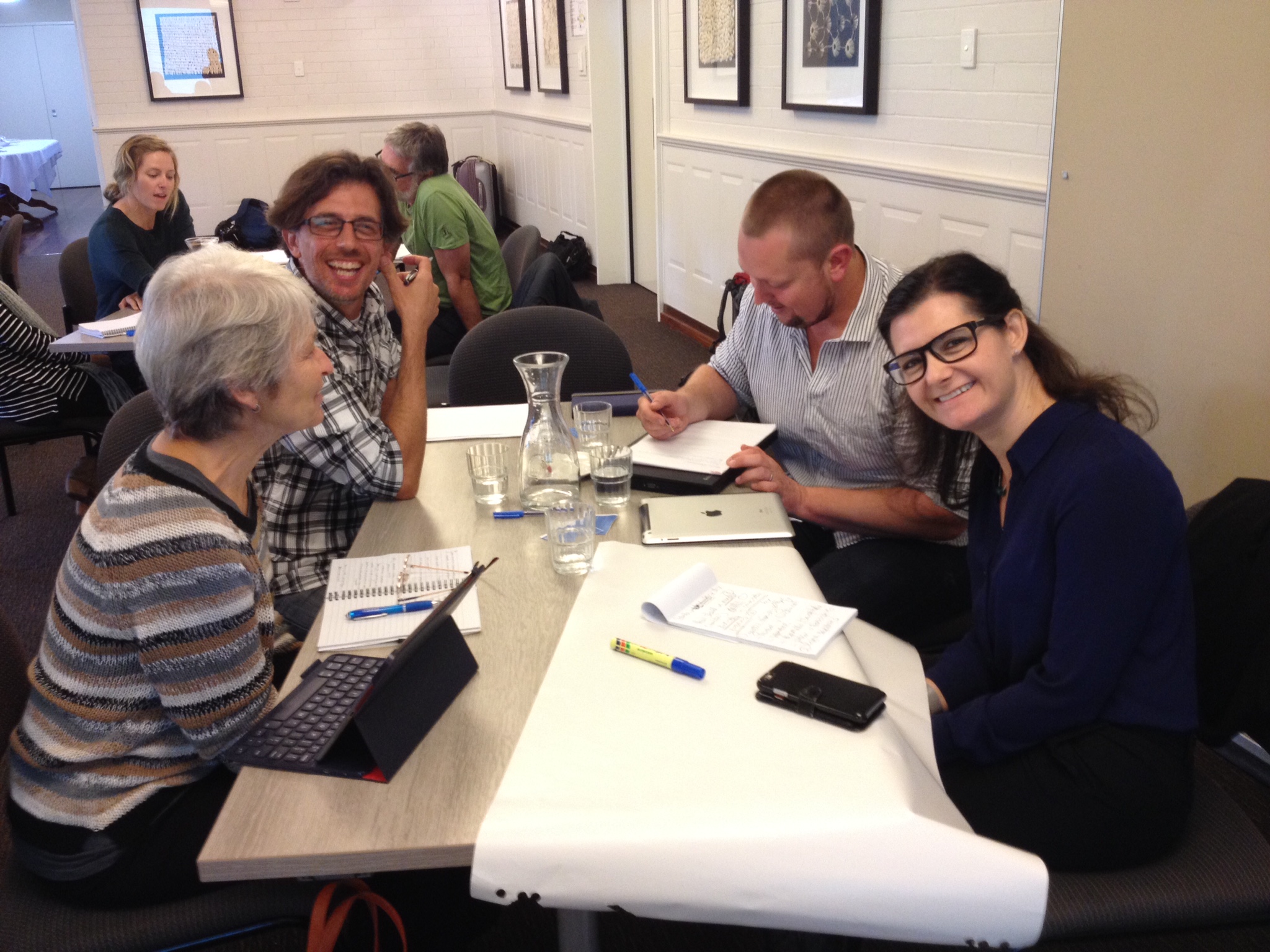
Genetic rescue for threatened species: Bandicoot bounces back
Tuesday, 26 November 2019Genetic rescue is a relatively new tool in the conservationists’ kit for recovering populations of imperilled species. Internationally, it has only been used a handful of times, but is gaining momentum as an important strategy for threatened species conservation in Australia. Conservation geneticist Andrew Weeks of The University of Melbourne believes it is going to be an increasingly important strategy for many species of flora and fauna with small and heavily fragmented populations. In this Threatened Species Recovery Hub project, he and his colleagues have been further testing genetic rescue and compiling genetic guidelines for use by conservation practitioners based on successes with threatened species like the mountain pygmy possum and eastern barred bandicoot. Here, he gives a brief history of genetic rescue in Australia, the success stories, and what the future holds for this new cutting-edge approach.
Populations of some threatened species have become so small that inbreeding and a lack of genetic diversity are reducing the health of the animals, their breeding success, and compromising the ability of populations and species to adapt to environmental change. Local examples include helmeted honeyeaters and rock wallabies. Genetic rescue aims to restore the genetic variation of an animal population by taking individuals from a genetically healthy (i.e, diverse) population and introducing them into a genetically compromised population. One of the first steps is to assess the likely compatibility of individuals from the two populations, particularly if they have been isolated for a long period of time; some concerns are often raised that genetic issues may arise in offspring or the offspring of offspring, such as sterility or poor growth. Assessments can occur directly through cross-breeding trials or undertaken through other approaches to provide confidence in compatibility. 
Over 500 eastern barred bandicoots call Mount Rothwell home. The feral predator-proof fence protects 473 ha, making it Victoria’s largest haven. Image:Nicolas Rakotopare
Genetic rescue is generally possible when populations haven’t diverged for long periods of time, although there is increasing evidence that under at least some circumstances, populations that have diverged tens or even hundreds of thousands of years ago can still be used in genetic rescues. This is an area of active research for our team, because there may be increasing need to cross populations that have been diverged for significant periods of time, as natural populations of many animals continue to get smaller and smaller. In fact, this is where we started our research on genetic rescue.
Starting with a very tiny possum
Genetic rescue was first implemented in Australia in 2010–2011 in a program I led for the recovery of the Mount Buller mountain pygmy-possum population in eastern Victoria. This program was a great success, and amply demonstrated the viability of genetic rescue as a method to support population recovery. We were able to avert the extinction of the Mount Buller mountain pygmy-possum by introducing as few as six males from Mount Hotham, a genetically healthy population that has been isolated from the Mount Buller population for tens of thousands of years. The population recovery was so great that we now have more mountain pygmy-possums at Mount Buller than ever previously recorded at this location and the population is the third largest in its entire distribution.
The genetic rescue of the mountain pygmy-possum was born out of necessity – the population would likely have gone extinct if we didn’t implement it back in 2010–11. However, we wanted to explore genetic rescue in a more controlled experiment and this led to our next step on our journey, which was undertaking genetic rescue with another small marsupial, the Victorian eastern barred bandicoot.
From just 19 bandicoots
Once widespread throughout western Victoria, the species declined substantially after European settlement due to habitat degradation and predation by the invasive red fox. The last wild mainland eastern barred bandicoot was spotted at Hamilton in south-western Victoria in 2002. Fearing the potential loss of the species in the wild, 40 animals were collected at Hamilton in 1988 and formed the start of a captive breeding program that has continued to this day. Later genetic analysis indicated that only 19 of these animals bred successfully, becoming the founders of the current population of roughly 900 individuals that are divided across six captive and island populations where foxes are absent.
One of the largest populations is found at Mount Rothwell, which is just 50 km from Melbourne and is the largest feral predator-free haven on the mainland in Victoria. Currently, Mount Rothwell houses a population of around 500 to 700 eastern barred bandicoots, and our present project aims to study the genetic rescue of this population because our previous research suggests that the Victorian eastern barred bandicoot is suffering from low genetic diversity and inbreeding. 
Inside one of the breeding pens at Mount Rothwell where Tasmanian eastern barred bandicoots were crossed with the mainland subspecies to introduce new genetic diversity. Image: Nicolas Rakotopare
Tasmanian infusion
Fortunately, wild populations of this bandicoot are still found in Tasmania. What we are aiming to do, then, is to restore genetic variation in the Victorian population by taking some Tasmanian eastern barred bandicoots and cross-breeding them with Victorian eastern barred bandicoots to increase their genetic variation, population fitness and adaptive potential.
My colleague Professor Ary Hoffmann and I have been running this genetic program for the past three to four years in collaboration with Mount Rothwell. In 2017, we travelled to Tasmania and collected some Tasmanian bandicoots. We built captive pens at Mount Rothwell and set up crosses between the Tasmanian wild individuals and the Victorian captive-bred eastern barred bandicoots. After ensuring the genetic compatibility of the two populations in the small breeding pens, we then released them into large fenced enclosures at Mount Rothwell in order to assess their fitness and make sure that they were showing normal behaviour.
Great grandkids doing well
Three generations have passed since that initial cross-breeding trial. We are now assessing how well cross-breeding has worked, both from a fitness perspective as well as at a genomic level. We want to understand exactly what happens when you cross two different populations that have been isolated for a long period of time. This is to see what effect that has on the recipient (Victorian) genome, which we now expect to be mixed up with the Tasmanian one, boosting genetic variation.
Once our trials are complete, we will use these bandicoots as founders for a new fenced feral-proof conservation reserve that has been built at Tiverton in western Victoria. This new site has the potential to hold over 1000 bandicoots and secure the long-term future for this species on mainland Australia. Then we will start filtering these bandicoots out to other populations, such as Woodlands Historic Park, Hamilton Community Parklands and even Phillip Island and French Island.
Importantly, this research is providing a foundation for how genetic rescue can be used more broadly in threatened species programs in Australia and overseas by dissecting the phenotypic and genomic consequences. We believe genetic strategies and genetic interventions are likely to become an important component of threatened species recovery programs, particularly in a time of rapid environmental change.
Further reading
Weeks AR, Sgro CM, Young AG, Frankham R, Mitchell NJ, Miller KA, Byrne M, Coates DJ, Eldridge MDB, Sunnucks P et al. 2011. Assessing the benefits and risks of translocations in changing environments: a genetic perspective. Evolutionary Applications, 4: 709–25.
Frankham R, Ballou JD, Eldridge MDB, Lacy RC, Ralls K, Dudash MR, Fenster CB. 2010. Predicting the probability of outbreeding depression. Conservation Biology, 25: 465–75.
This Threatened Species Recovery Hub project is a collaboration between The University of Melbourne and Mount Rothwell. It receives support from the Australian Research Council, the Victorian Department of Environment, Land, Water and Planning, the Australian Government’s Department of Environment and Energy and National Environmental Science Program, the Douglas Family, Zoos Victoria, and Funder@Melbourne (crowdfunding).
For further information
Andrew Weeks - aweeks@unimelb.edu.au
Top image: An eastern barred bandicoot from the genetic rescue breeding program at Mount Rothwell being released to one of the large paddocks. Image: Nicolas Rakotopare





